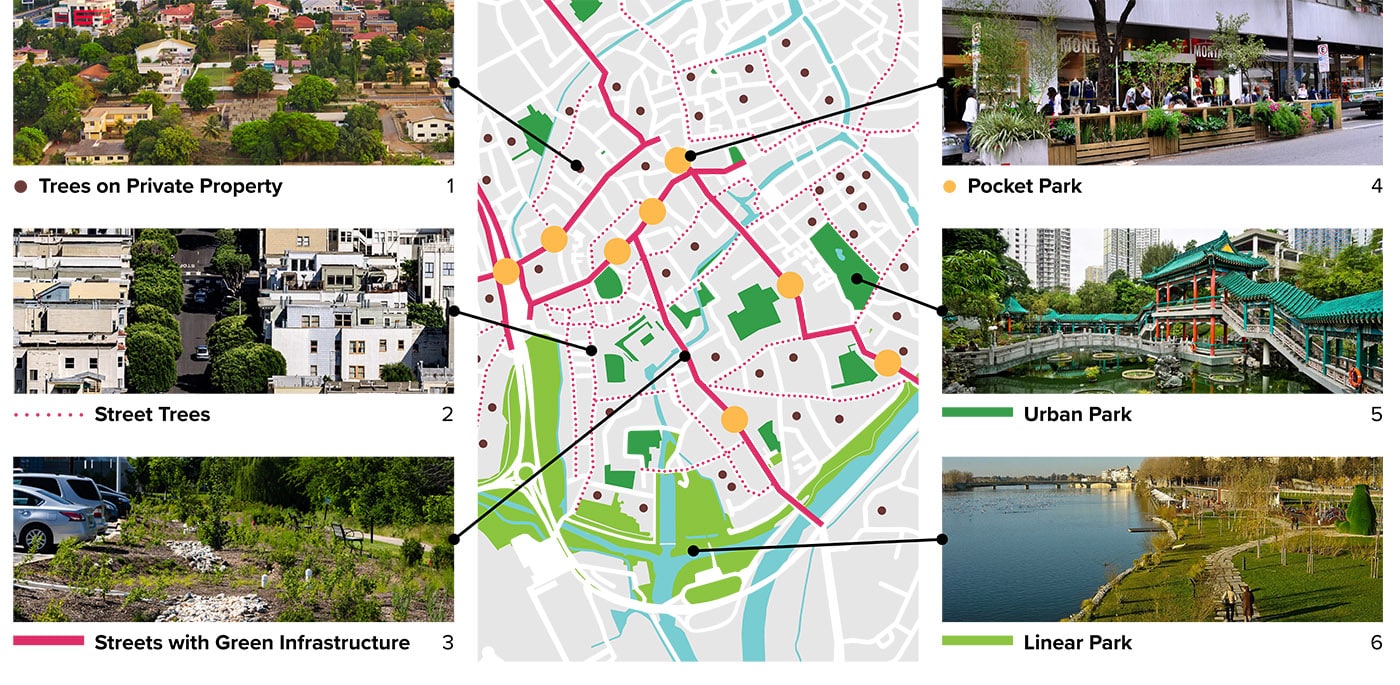Lesson
Part of: Urban Forests for Healthier Cities: Policy, Planning, Regulations, and Institutional Arrangements
What is an Urban Forest?
BOOKMARK
An urban forest encompasses the trees and shrubs in an urban area, including trees in yards, along streets and utility corridors, in protected areas, and in watersheds. (Escobedo, Kroeger, & Wagner, 2011; Miller, Hauer, & Werner, 2015)
This includes individual trees, street trees, green spaces with trees, and even the associated vegetation and the soil beneath the trees. (Konijnendijk et al, 2006; Escobedo, Kroeger, & Wagner, 2011)
In many regions, urban forests are the most extensive, functional, and visible form of green infrastructure in cities. Green infrastructure is the natural and semi-natural infrastructure within a city that provides ecosystem services like stormwater management or air pollution abatement. (Lafortezza et al, 2017)
